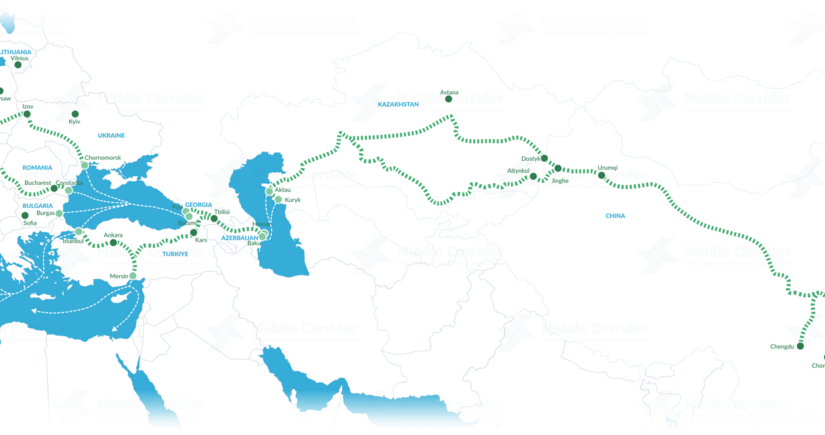Middle Corridor becomes priority for China, EU, and US amid global risks
- 25 July, 2025
- 16:28

The Middle Corridor or Trans-Caspian International Transport Route (TITR) once again highlights Azerbaijan's importance as a key link in Eurasian logistics, Report informs, referring to the analytical report prepared within the framework of the project by Uzbekistan’s Transport Ministry.
The document notes Azerbaijan's role in this route is based on modern transport infrastructure, seaports located on the Caspian Sea coast, and at the same time sustainable relations with Türkiye and Georgia, which are among the main participants of the Middle Corridor.
The authors pay special attention to the Azerbaijan-Türkiye tandem. It is noted that these two countries always act in a coordinated manner in geopolitical and geoeconomic projects. This cooperation is assessed as a factor supporting the efforts of the West, especially the European Union and the US, to strengthen relations with Central Asia against the background of sanctions imposed on Russia and Iran.
It is emphasized that since gaining independence, Azerbaijan has consistently pursued a policy aimed at developing transport infrastructure with the goal of becoming an international transport hub. In this context, both the Middle Corridor and the North-South route are of strategic importance for the country.
"Azerbaijan views the TITR not only as a means of infrastructure development but also as part of the economy of the future, as well as an important channel for the export of local products. In this regard, the shipment of goods via the Baku-Xi'an railway route in November 2024 is an important example," the document reads.
The document also highlights that the Middle Corridor also serves as a geopolitical tool for Kazakhstan. The TITR helps this country integrate into global supply chains, strengthen relations with the European Union and Türkiye, and at the same time increase its role in the One Belt, One Road initiative. The expansion of the route allows Astana to diversify its foreign economic relations and strengthen cooperation with the Turkic world, Europe, and the Asia-Pacific region countries.
"The modernization of infrastructure within the Middle Corridor framework makes a significant contribution to the development of intra-regional relations and the improvement of transport capabilities of Central Asian countries," the authors state.
The document additionally notes that both the US and the European Union consider the Middle Corridor as an alternative to traditional routes passing through Russia and evaluate the development of this route as a strategic priority. China, against the background of the Ukraine conflict, shows interest in the TITR as a more stable and sustainable transit route that reduces geopolitical risks.
"In the context of global uncertainties, the Middle Corridor is a safer and more efficient route both for Beijing within the framework of the One Belt, One Road initiative and for Moscow. The partnership between China and Russia can serve to modernize the Eurasian transport architecture and deepen regional integration," the document says.
The report also specifically mentions Tajikistan's interests. Dushanbe sees the Middle Corridor as an opportunity to access European markets through the export of precious metals, textiles, and construction materials. The authors note that Tajikistan has elevated its level of cooperation with Baku to the level of strategic partnership against the background of increasing activity around this route.
In 2024, the volume of cargo transportation via the TITR increased by 62% to 4.5 million tons. In 2025, the figure is expected to increase to 5.2 million tons, of which 4.2 million tons will pass through the countries participating in the route. Of this volume, 2.5 million tons will be dry cargo (equivalent to 96,000 TEU), and 1.7 million tons will be oil.
The route's throughput capacity could reach 10 million tons per year by 2027, which will create a sustainable basis for expanding Azerbaijan's transit potential and attracting additional investments in infrastructure.
